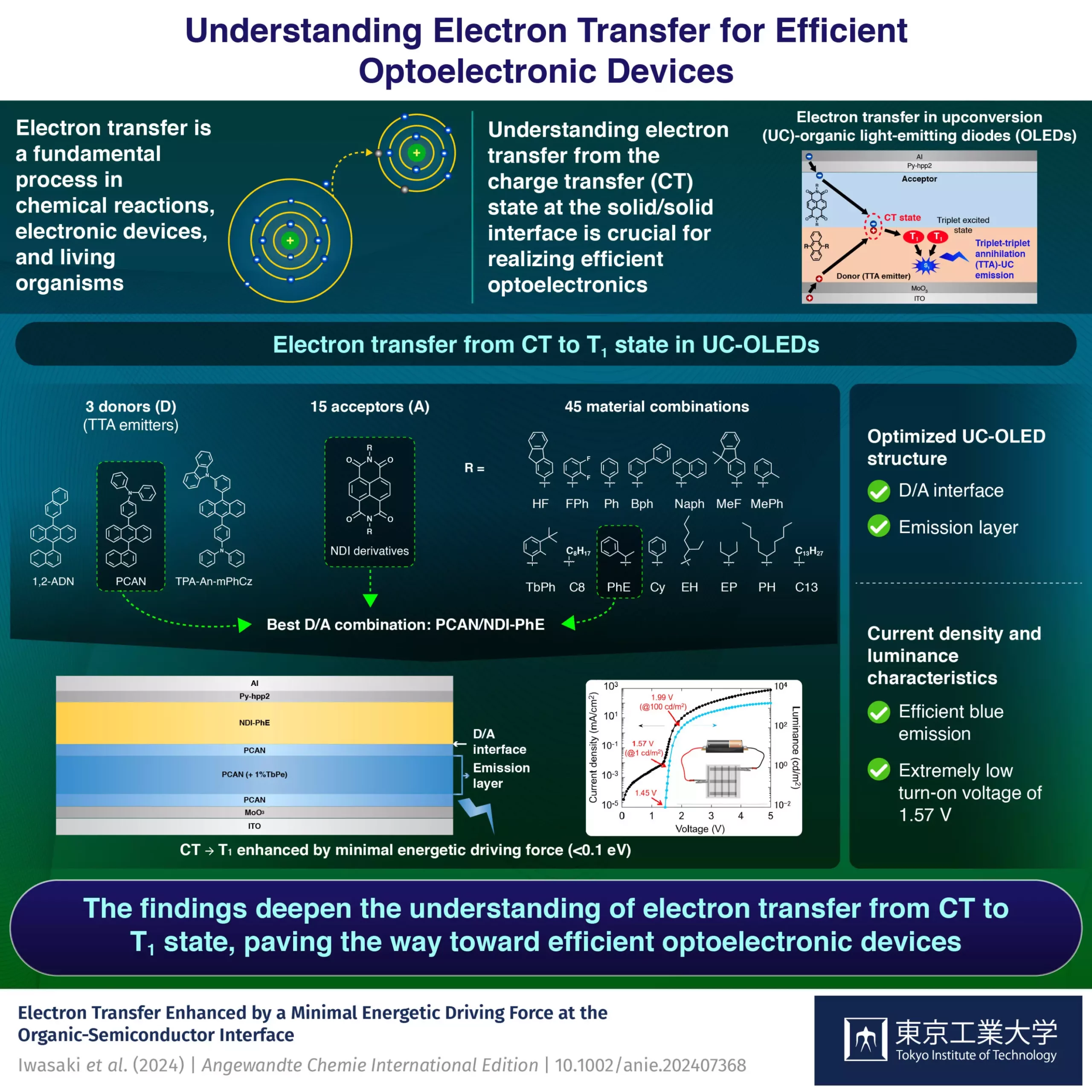Electron transfer is a fundamental process that plays a crucial role in various aspects of technology and biology. It involves the movement of electrons from one molecule or atom to another, known as the donor and acceptor respectively. In the realm of organic optoelectronic devices like OLEDs and photovoltaics, electron transfer is key to their performance and efficiency. By studying the steps involved in electron transfer at solid/solid interfaces, researchers aim to improve the functionality of these devices, which are widely used in digital displays and portable electronics due to their lightweight and flexible nature.
A critical intermediate step in the operation of organic optoelectronic devices is the formation of a charge transfer (CT) state at the interface between the donor and acceptor materials. The CT state represents a weakly bound electron-hole pair that influences the overall efficiency of the device. Understanding the energetic and structural factors that govern electron transfer steps, particularly from the CT state to other excited states, is essential for enhancing device performance. This can be achieved through experimental investigations using theoretical frameworks like the Marcus theory, which provides insights into the energetics and structures involved in electron transfer processes.
Recent advancements in the field of OLED technology have led to the development of upconversion OLEDs (UC-OLEDs) that exploit unique electron transfer mechanisms to improve device performance. One such mechanism, known as triplet-triplet annihilation (TTA), facilitates electron transfer from the CT state to a triplet excited (T1) state. This novel approach can significantly reduce the turn-on voltage of blue UC-OLEDs compared to conventional OLEDs, addressing issues related to high driving voltage and stability. By harnessing the electron transfer efficiency from the CT state to the T1 state, researchers aim to optimize the design and functionality of UC-OLEDs for enhanced performance.
Research Insights and Discoveries
A recent study conducted by a team of researchers from Japan, led by Associate Professor Seiichiro Izawa, focused on investigating the electron transfer efficiency from the CT state to the T1 state in 45 UC-OLEDs. By analyzing different material combinations of anthracene derivatives as donors and naphthalenediimide derivatives as acceptors, guided by the Marcus theory, the researchers were able to identify key factors influencing electron transfer processes. Their findings, published in the journal Angewandte Chemie International Edition, revealed that electron transfer to the T1 state is enhanced by a minimal driving energetic force of less than 0.1 eV. Additionally, they discovered a promising donor-acceptor combination, PCAN/NDI-PhE, that enabled the fabrication of an efficient blue UC-OLED with an exceptionally low turn-on voltage of 1.57 V.
The insights gained from this research offer a deeper understanding of the mechanisms underlying electron transfer from the CT state to the T1 state in UC-OLEDs. By elucidating the factors that govern efficient electron transfer processes, researchers can further enhance the performance of these devices and pave the way for the development of more energy-efficient and stable optoelectronic technologies. Continued research in this area is essential for unlocking the full potential of electron transfer mechanisms in organic devices and driving innovation in the field of optoelectronics.


Leave a Reply